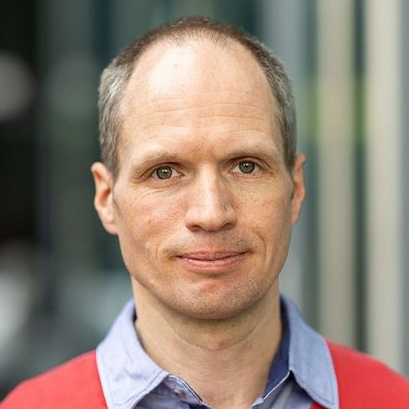Visiting fellow to develop cooling coatings for solar devices

Working to develop innovative approaches for cooling solar cells, Klaus Jäger joined the Andlinger Center for Energy and the Environment in August as a Gerhard R. Andlinger Visiting Fellow.
Jäger is a senior scientist at Helmholtz-Zentrum Berlin für Materialien und Energie (HZB) and is the vice director of the Berlin Joint Lab for Optical Simulations for Energy Research. He brings with him over 15 years of research experience in solar photovoltaics, with a particular emphasis on optical modeling and simulations.
At Princeton, Jäger will work with Jyortimoy Mandal, assistant professor of civil and environmental engineering; Barry Rand, professor of electrical and computer engineering and the Andlinger Center for Energy and the Environment; and Forrest Meggers, associate professor of architecture and the Andlinger Center for Energy and the Environment, to design radiative cooling coatings that can be applied to solar energy devices to increase their power output and longevity.
Conventional crystalline silicon solar cells typically absorb light from 0.4 to 1.1 microns, though the solar radiation spectrum extends far beyond that upper limit. Even within the range of wavelengths they can absorb, solar cells can convert only a fraction of incoming energy into electricity. These sources of energy that are not transformed into electricity instead become added heat for the solar device.
Keeping solar cells as cool as possible is important because they become less efficient at high temperatures. Jӓger said that continued exposure to high temperatures might also reduce the lifespan of a solar panel in the field.
To beat the heat, the team will work to develop materials that can be applied as a cooling coating to the surface of a solar device. The researchers will design the coating to maximize both the throughput of light at wavelengths that silicon solar cells can absorb and the coating’s reflectivity above those wavelengths to mitigate heat transfer, keeping the device cooler and more efficient.
The materials will also be designed to enhance radiative cooling. Infrared radiation at wavelengths between 8 and 13 microns can pass through the atmosphere and into space. Thus, a coating that can radiate energy back to the atmosphere between those wavelengths would lead to cooling benefits beyond those achievable through reflectivity alone.
“It will be a very interesting challenge to find the combination of materials with the properties we want at each wavelength,” said Jӓger. “But the challenge is what motivates and inspires me as a researcher.”
In addition to his research efforts, Jӓger said he looks forward to his fellowship with the Andlinger Center as a time to explore new areas, build new skills, and make new connections with researchers working in other disciplines. For example, he is interested in learning more about how economics, policy, and social factors can intersect to form either strong support or strong opposition for the deployment of energy technologies.
“My research is focused on new technologies, so I look forward to interacting with researchers working on public policy and the social sciences. These topics are outside the traditional realm of science and engineering but are equally important to the energy transition — in many cases, they can actually be bigger obstacles to progress,” Jӓger said. “There is an excellent combination of expertise and knowledge here at the Andlinger Center that I look forward to learning from.”
The Gerhard R. Andlinger Visiting Fellows program is designed to attract distinguished visitors who will collaborate with Andlinger Center faculty, researchers, and students, and enrich the research and teaching at the Andlinger Center. Applications for the program are open until January 6, 2025.
Related articles: